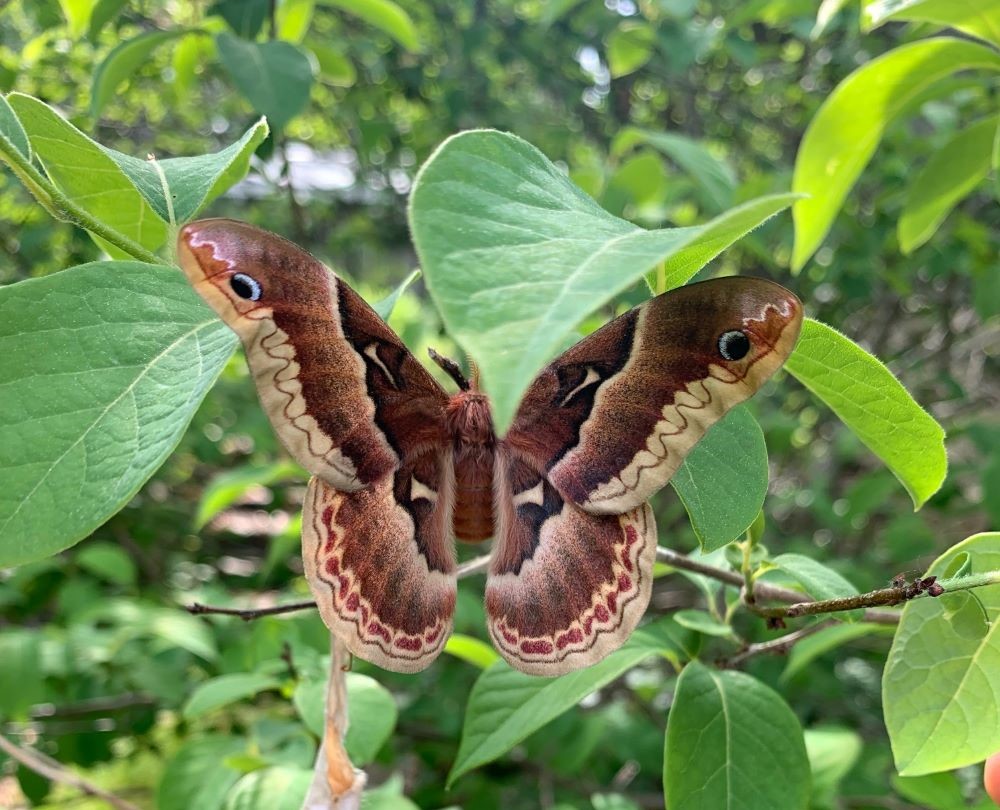Hope Comes on the Wings of a Moth
Insects under threat worldwide
By Avice Meehan

This female Prometheus moth, also called the spicebush silkmoth, and its cocoon were photographed in a Norfolk garden.
Poet and naturalist Susannah Wood admits to having a favorite insect: the Prometheus moth, which she saw for the first time last year on a spice bush in her garden. The moth, with a wingspan the size of a hand, had just emerged and the silky remains of its cocoon were still visible.
For Wood, that sighting represented a moment of hope in an otherwise bleak litany of loss faced by insects around the world because of climate change, habitat loss and pesticide use. During a recent talk sponsored by the Conservation Commission at the Norfolk Library, titled “Insects: The Power and the Glory,” she surveyed both the sheer variety of insects and the important roles they play in the environment.
“Insects can be as small as the fairy wasp, which is the width of a human hair, and as large as the Hercules beetle, which is seven inches long. They can be found in the nostrils of walruses all the way to the Himalayas,” Wood said.
What makes an insect? They are invertebrates with three pairs of legs and one to two sets of wings. There are about 200 million of them for every human. Spiders and ticks are not insects because their bodies are organized differently: they have eight legs and no wings.
Insects help build soil, decompose cow dung, work as pollinators and serve as important food sources for humans and birds. Wood noted that a pair of chickadees will consume anywhere from six to nine thousand caterpillars to raise a single brood.
So what can one do? Wood urged Norfolk residents to find “hope in small-scale actions,” which include “turning our gardens into habitats” and rethinking lawn care—just in time for “No Mow May.”
“We have to think of our lawns as area rugs and not wall-to-wall carpeting,” she said.
Back to the Prometheus moth for a moment: Wood saw both female and male moths and hopes to see them again, since the species typically returns to the same location each year. The Callosamia promethea or spicebush silk moth does not eat during its adult phase. It is typically found in eastern forests and does not harm host plants–including the spice bush.
